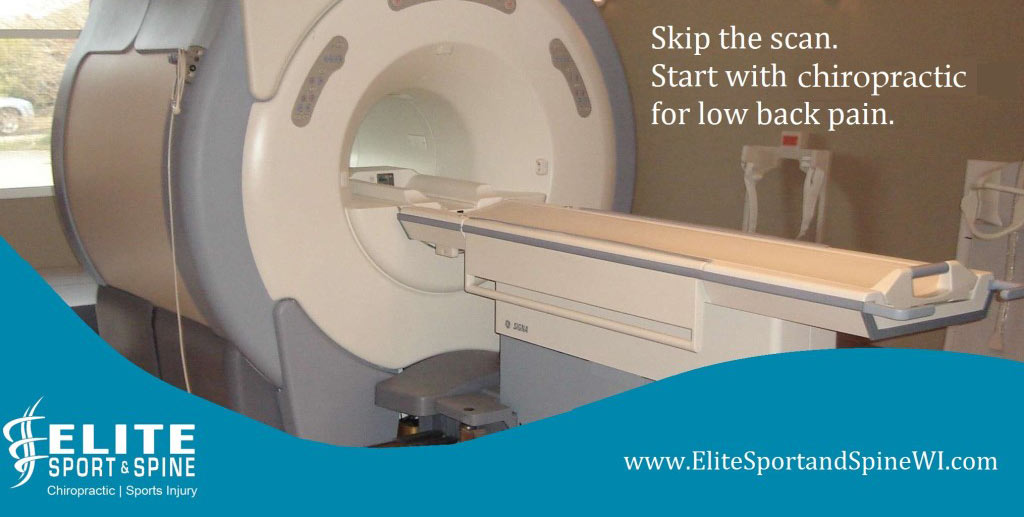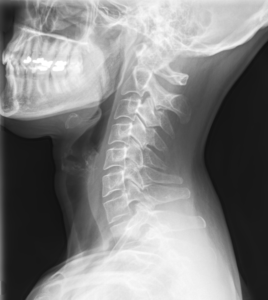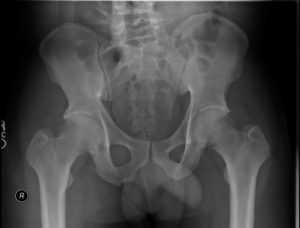The Value of X-Ray

X-ray and Chiropractic Treatments
 We frequently have new patients ask if we take x-rays at the first visit. Our answer is always, “The need for an x-ray is determined by the findings of the initial examination.” If the detailed exam leads the doctor to determine the value of x-ray is necessary before beginning treatment, then we will refer you to an imaging facility. However, we do not routinely x-ray every patient.
We frequently have new patients ask if we take x-rays at the first visit. Our answer is always, “The need for an x-ray is determined by the findings of the initial examination.” If the detailed exam leads the doctor to determine the value of x-ray is necessary before beginning treatment, then we will refer you to an imaging facility. However, we do not routinely x-ray every patient.
In some cases the exam determines an x-ray, MRI, or other imaging is needed. We order these tests from an outside imaging center, typically either Center for Diagnostic Imagining (CDI) or SmartChoice MRI. The major reason we refer for x-rays and other imaging is it allows a medical radiologist to review the images. This helps to ensure that nothing is missed on your image, and it gives everyone involved an extra level of confidence in the quality of the image and the radiology report
Most patients want to limit their exposure to radiation as well as their costs, and they are relieved to learn we don’t automatically x-ray every new patient if it is not necessary. Elite Sport & Spine’s policy on imaging is based on clinical research and several key facts.
Imaging does not improve outcomes for patients with low back pain.
According to the American College of Physicians, clinicians should not routinely order x-rays or MRIs for most cases of low back pain.
“Clinicians should not routinely obtain imaging or other diagnostic tests in patients with nonspecific low back pain (1). ”
The American College of Radiology repeats this point of view. In its Appropriateness Criteria from 2015, it states that for a patient with Low Back Pain (2), a general x-ray or MRI of the lumbar spine is usually not appropriate. They conclude that imaging is not warranted in the diagnosis or treatment for these cases.
“It is now clear that uncomplicated acute LBP and/or radiculopathy is a benign, self-limited condition that does not warrant any imaging studies (3).”
Findings of degeneration during imaging may not actually be the cause of pain.
Often, there are findings on the radiology reports that tell us about degeneration, tissue damage, or other fear-inducing terms. However, much of these findings may be completely unrelated to your pain, and in fact, even normal.
“Advanced imaging (MRI and CT) are increasingly used in the evaluation of patients with low back pain. Findings such as disk degeneration, facet hypertrophy, and disk protrusion are often interpreted as causes of back pain, triggering both medical and surgical interventions, which are sometimes unsuccessful at alleviating the patient’s symptoms (4).”
Sometimes imaging is unable to tell the difference between old and new damage, which makes it difficult to tell what is actually causing your pain.
Findings on MR imaging within 12 weeks of serious LBP inception are highly unlikely to represent any new structural change. Most new changes (loss of disc signal, facet arthrosis, and end plate signal changes) represent progressive age changes not associated with acute events (5).
And as we age, anatomical changes are a normal part of our lives, and do not always cause us pain.
“Many imaging-based degenerative features are likely part of normal aging and unassociated with pain (6).”
Imaging increases additional interventions that do not improve outcomes.
The Journal of the American Medical Association states that “early imaging may precipitate interventions that do not improve outcomes.” X-rays or MRIs early on in treatment may lead to higher costs, more tests, and care that do not ultimately help the patient’s condition (7).
Imaging can cause unnecessary exposure to radiation.
Another reason we hesitate before sending patients for x-rays is to avoid unnecessary exposure to radiation. This can pose harmful cumulative effects over time. A 2010 national initiative from the FDA seeks to “reduce unnecessary radiation exposure from medical imaging.” As stated in the initiative,
“In some cases, ordering physicians may lack or be unaware of recommended criteria to guide their decisions about whether or not a particular imaging procedure is medically efficacious. As a result, they may order imaging procedures without sufficient justification and unnecessarily expose patients to radiation (8).”
Imaging can be inaccurate.
In many cases an x-ray or MRI would not even help in our diagnosis of symptoms or conditions, and research shows that imaging can even be inaccurate. We have to be aware of the possibility these tests give us false positives, telling us that something is wrong when it is not. This is true for imaging of the spine as well as other joints in the limbs.
“MRI may be inaccurate in assessing containment status of lumbar disc herniations in 30% of cases (9).”
Inaccuracy can extend to anatomy beyond the spine. An example of this is diagnostic imaging of the knee.
“The true positive rate for complete ACL tear diagnosis with MR imaging was 67%, making the possibility of a false-positive report of “complete ACL tear” inevitable with MR imaging (10).
 When do we order imaging?
When do we order imaging?
Elite Sport & Spine’s approach is based on current pain management research and patient outcomes. We order X-rays and MRIs only when clinically necessary. If at any time we suspect it is in the best interest of your health, then we will not hesitate to send you to an imaging center for additional testing. In rare cases, the patient’s condition does not significantly improve within two weeks or continues to deteriorate after beginning treatment, and imaging is always ordered in these situations as well.
Learn more about our evidence-based treatments for pain management such as joint manipulation, soft tissue and massage treatments, acupuncture, the McKenzie Method and active rehabilitation exercises, click here.
As always, we want too see you feel better and move better!
To schedule an appointment: Call 262-373-9168 or schedule online.
Citations
1. Chou R, Qaseem A, Snow V, Casey D, Cross JT, Shekelle P, et al. Diagnosis and Treatment of Low Back Pain: A Joint Clinical Practice Guideline from the American College of Physicians and the American Pain Society. Ann Intern Med. 2007;147:478-491. doi: 10.7326/0003-4819-147-7-200710020-00006
2. Defined as: “Acute, subacute, or chronic uncomplicated low back pain or radiculopathy. No red flags. No prior management.”
3. Appropriateness Criteria, American College of Radiology.
4. Brinjikji, et al., Systematic literature review of imaging features of spinal degeneration in asymptomatic populations. AJNR Am J Neuroradiol. 2015 Apr;36(4):811-6. doi: 10.3174/ajnr.A417
5. Carragee, Eugene et al. Are first-time episodes of serious LBP associated with new MRI findings? The Spine Journal , Volume 6 , Issue 6 , 624 – 635
6. Brinjikji, et al., Systematic literature review of imaging features of spinal degeneration in asymptomatic populations. AJNR Am J Neuroradiol. 2015 Apr;36(4):811-6. doi: 10.3174/ajnr.A417
7. Jarvik JG, Gold LS, Comstock BA, Heagerty PJ, Rundell SD, Turner JA, Avins AL, Bauer Z, Bresnahan BW, Friedly JL, James K, Kessler L, Nedeljkovic SS, Nerenz DR, Shi X, Sullivan SD, Chan L, Schwalb JM, Deyo RA. Association of Early Imaging for Back Pain With Clinical Outcomes in Older Adults. JAMA. 2015;313(11):1143-1153. doi:10.1001/jama.2015.1871
9. Weiner BK, Patel R. The accuracy of MRI in the detection of Lumbar Disc Containment. Journal of Orthopaedic Surgery and Research. 2008;3:46. doi:10.1186/1749-799X-3-46.
10. Tsai K-J, Chiang H, Jiang C-C. Magnetic resonance imaging of anterior cruciate ligament rupture. BMC Musculoskeletal Disorders. 2004;5:21. doi:10.1186/1471-2474-5-21.
 262-373-9168
262-373-9168




